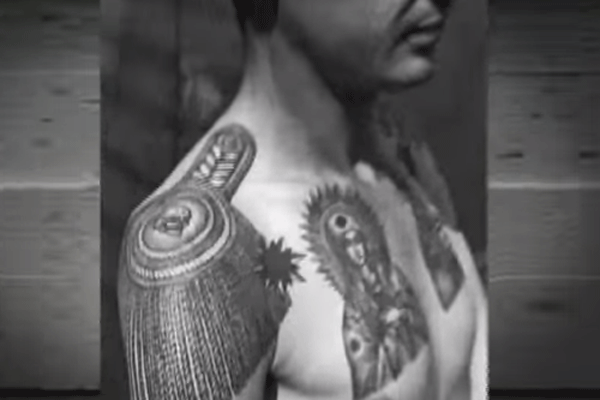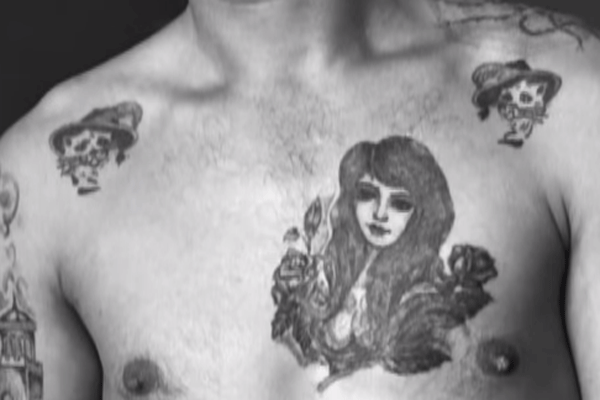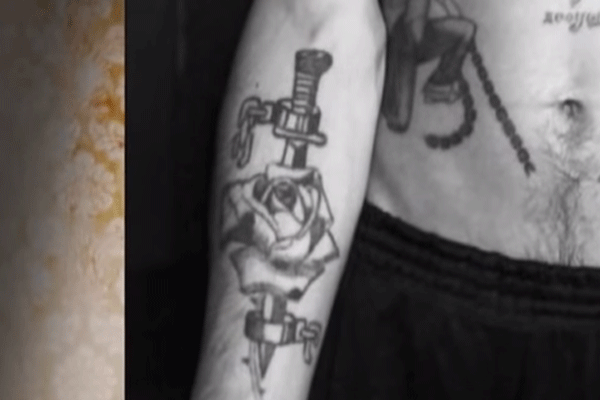In the era of the Soviet party, Russian prisons were controlled by a gang known as the Thieves in Law. These inmates had strict guidelines on what and where they could tattoo on their bodies. The tattoos were not only intricate works of art but also told a story about the inmate’s crimes and life. Tattoos had to be earned through physical acts or by standing up to authority. If an undeserved tattoo was discovered, it would be forcibly removed, and the inmate would face punishments like beatings or worse.
Although the tattoo guidelines of the Thieves in Law are no longer followed, it’s interesting to explore the past and understand the foundation of information that Russian inmates used to tattoo on their skin. Here, we present 12 Russian prison tattoos and their meanings.
Table of Contents
ToggleThieves’ Stars
The location of the stars on the body determines a prisoner’s status. Stars on the knees indicate a prisoner who commands respect. It symbolizes their refusal to kneel before anyone. Stars on the chest mark a higher rank. Only the most respected inmates can wear thieves’ stars in that area. These tattoos must be earned, and wearing an undeserved tattoo can lead to severe consequences.
Portraits of Stalin and Lenin
In the 1900s, prisoners believed that having tattooed portraits of Lenin and Stalin on their chests would protect them from execution by a firing squad. The authorities would not shoot at any images of their leaders; instead, they would shoot prisoners in the back of the head.
Epaulettes
Epaulettes, ornamental shoulder pieces usually found on military uniforms, were used to signify rank within the Thieves in Law. The known ranks were captains, lieutenants, and colonels.
Oskal (Big Grin)
Tigers, leopards, or snarling wolves, known as Oskals, represent aggression or hostility toward the authorities.
Spider
A spider crawling on the right shoulder is indicative of a thief. If the spider is crawling up the shoulder, it means the thief is still active. If the spider is crawling down, it signifies that the thief is done with the criminal life.
Cathedrals (Kremlin)
Cathedrals, or Kremlins, represent the time spent incarcerated and are iconic Russian prison tattoos. The number of domes on an inmate’s church indicates the number of sentences they have served in their lifetime. These tattoos can be found anywhere on the body.
Manacles
Manacles, often paired with cathedrals found on the hands, symbolize long sentences. They indicate that the inmate served a sentence longer than five years.
Grudge
A grudge is typically depicted as a dog baring its teeth. It implies a grudge against authorities or life in general. It shows disdain for the police and other authority figures.
Rings
Ring tattoos on the hands immediately indicate a convict. Their meanings can range from the type of crimes committed to aggression against authority or sentences served.
Woman
A woman tattooed onto the chest of an inmate symbolizes their initiation into the Thieves in Law. This type of tattoo may incorporate a rose. However, if the woman is placed on the stomach, it signifies that the inmate is a prostitute.
Flowers
A tulip or rose ensnared in barbed wire or wrapped around a dagger is symbolic of a conviction received before the age of 18.
Skulls
A skull is a symbol of standing up against authority; it means to “bear one’s teeth” against the Soviet power. Inmates earned these tattoos by challenging figures of authority, such as correctional officers.
Frequently Asked Questions
Q: Are these Russian prison tattoos still common today?
A: The tattoo guidelines of the Thieves in Law are no longer followed in Russian prisons. Inmates now create their own tattoos with varied meanings.
Q: What do Russian prison tattoos signify?
A: Russian prison tattoos tell stories about the inmate’s crimes, rank, and time served. Each tattoo carries a significant meaning within the prison culture.
Q: Are these tattoo designs exclusive to Russian prisons?
A: While these tattoo designs originated in Russian prisons, they have gained recognition and popularity in the tattoo community worldwide.
Conclusion
Russian prison tattoos are not just random ink on skin; they are symbols of the inmates’ stories, experiences, and status within the prison hierarchy. Each tattoo has a specific meaning, conveying messages about power, respect, and defiance.
While the Thieves in Law and their strict guidelines are no longer prevalent, understanding the history and culture behind these tattoos provides insight into the minds of inmates and their experiences in the Russian prison system.
If you’re fascinated by the world of tattoos, consider exploring the artistry, history, and meaning behind different tattoo designs. And remember, for high-quality tattoo numbing creams, visit the TKTX Numbing Cream Store.


















